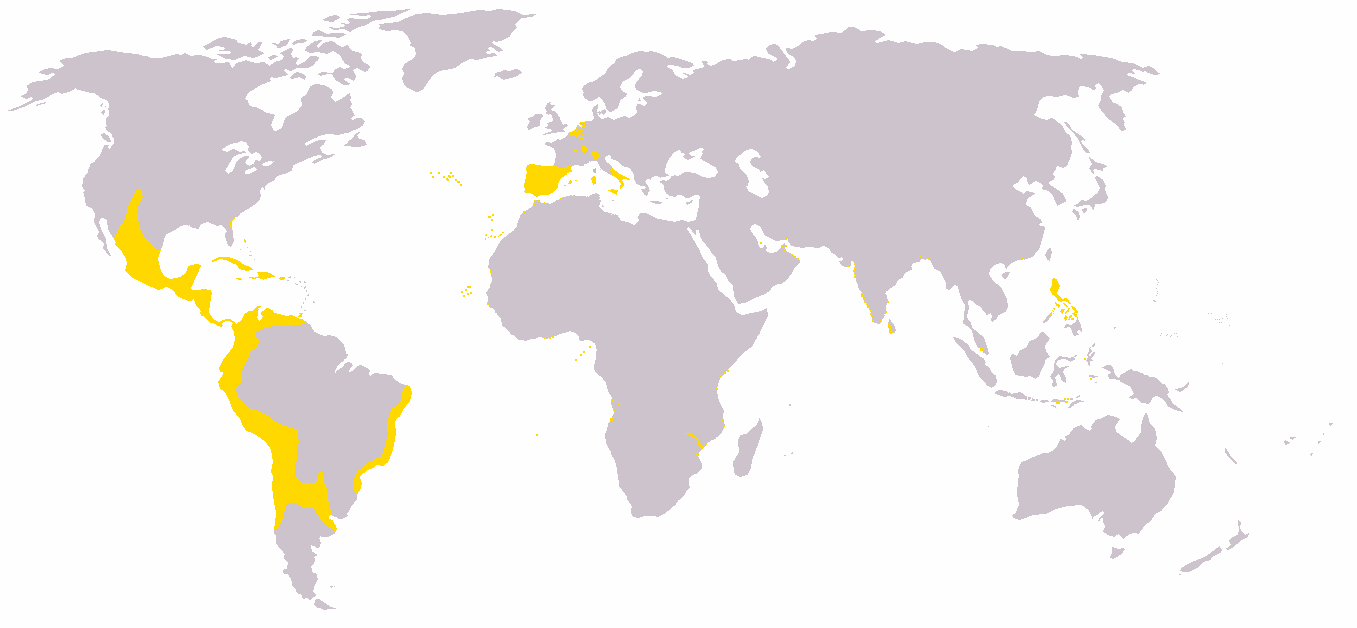So, we were left, by 1558, with a man who yearned to improve his stock, despite the fact that he was one of the most powerful men in the world. There is one more important factor here, though: Philip considered himself the protector of the Catholic faith.
"Philip II generally believed that what was good for Spain was good for the Catholic Church. Philip himself was a devout Catholic and used up vast sums of money in defence of Catholicism. He looked on the pope as the spiritual head of the Catholic Church but he did not commit himself to the decisions of Rome when they conflicted with his own beliefs." (History Learning Site)
Philip battled the Ottoman Turks, he helped the infamous Inquisition grow and flourish, and he gave no quarter to the upstart Protestants, be they in his provincial Netherlands, or elsewhere. Papal Bulls (orders from the Pope) had to go through him, and Philip basically squashed Protestantism in Spain before it ever got started. His influence on Catholicism was not the most important fact, however. The important bit is that he considered himself more important than the goddamned Pope. David Howard asserts that Philip (as many monarchs did) saw himself as appointed by God, and Roger Lockyer surmises his hold on the church: "Philip, convinced of his own spiritual integrity and his innate superiority of all things Spanish, kept a firm hold on 'his' church."
 |
| Philip's Empire in 1598 (above) and his European holdings in 1580 (below) |
So what do you do when you're an embittered, powerful man? You pick fights. And who do you pick a fight with? Let's play a game. How does this person sound for a perfect nemesis?
- This person supported the Dutch revolutionaries you have been warring with for most of your life.
- This person is a member of the faith you hate and have sworn to destroy.
- This person denied your marriage proposal.
That's right. By the mid-1580s, Philip had made up his mind -- he was going to go after Queen Elizabeth of England.
There were other prompts behind this: as early as 1583, Alvaro de Bazan, the great admiral and war hero of Spain, saw England's growing naval power as a threat to Spain's empire, and wrote to Philip, urging him to war. In the 1570s and '80s, the English dogged the Spanish with privateers (state-subsidized pirates) - in fact, one of the greatest English sailors of all-time, Sir Francis Drake, was one such hired gun. His attacks on Spanish America sparked a new war in 1585.
In 1587 Elizabeth executed Mary, Queen of Scots, a Catholic whose claim to the throne of England Catholic Europe had long supported. If that wasn't the final straw, it was certainly one of them. It was no longer a grudge, it wasn't just a war, it was a crusade.
As in, an actual crusade. Following Mary's execution, the Pope allowed Philip to conduct a crusade against the heretical English queen. This meant collecting crusade taxes, being allowed to grant indulgences to his men, and even a promise from the Pope that should the Spanish make land in England, the venture would be subsidized by the Church. This was not a stretch - Catholics hated Elizabeth. She had been excommunicated in 1570 and anybody who served her was considered treasonous to the faith, punishable by death.
And so, by the middle of 1587, the cogs of war started to turn. Every available ship was pressed into service; every available man was absolved of his sins and had a musket, sword, pike or oar shoved into his hands. Taking charge of this venture was the venerable Marquis of Santa Cruz, Alvaro de Bazan, the aforementioned seafaring legend of Spain. The plan he concocted with Philip was simple: the Spanish armada would sweep the English Channel, reach the Netherlands, and escort the 30 000 Spanish veterans stationed there across the Strait of Dover and invade the island. Simple enough.
But, as Philip was about to find out, launching a massive invasion wasn't as easy as that last sentence made it sound. Sports fans will know, what a team should do on paper and what happens on the field are entirely different things. Collecting All-Stars and winning games are not synonymous, and like a GM whose underachieving team is falling flat on its face, Philip is about to learn this lesson the hard way.
No comments:
Post a Comment